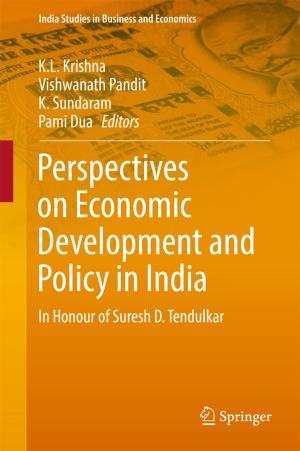Sustainable Crop Protection under Protected Cultivation
Nonfiction, Science & Nature, Technology, Agriculture & Animal Husbandry, Science, Biological Sciences, Environmental Science| Author: | P. Parvatha Reddy | ISBN: | 9789812879523 |
| Publisher: | Springer Singapore | Publication: | January 7, 2016 |
| Imprint: | Springer | Language: | English |
| Author: | P. Parvatha Reddy |
| ISBN: | 9789812879523 |
| Publisher: | Springer Singapore |
| Publication: | January 7, 2016 |
| Imprint: | Springer |
| Language: | English |
This book focuses on pests (insect and mite) and diseases (fungal, bacterial, viral and nematode) in protected horticulture (fruits, vegetables and ornamentals) using physical, cultural, chemical, biological, host resistance, and integrated methods. It opens with chapters describing the setting in which integrated pest and disease control operates, i.e., the greenhouse and its environment. Subsequent chapters present the basic strategies and tactics of different control methods including integrated control, with special reference to greenhouse crops. Further chapters include the different facets of biological pest and disease control – its scientific bases, its development in practice, its commercialization and quality control. The concluding chapters of the book highlight the present status of integrated pest and disease control for the most important greenhouse crops (fruits, vegetables and flower crops) worldwide. The book’s final chapter explores future challenges for researchers assigned to identify non-pesticide methods and integrate sustainable pest management technologies that can contribute to increased productivity, such as breeding for durable resistance, biological control and devising integrated methods that will have minimal adverse environmental and social impacts.
Among productivity-enhancing technologies, protected cultivation has a tremendous potential to increase the yield of vegetables and flower cro
ps by several fold. Pests and diseases are one of the major challenges to protected cultivation. Year-round warm temperatures and relatively high humidity together with abundant food make the protected environment of greenhouses highly attractive to pests and diseases. Nevertheless, very little attention has been paid to the manipulation of greenhouse environments expressly to avoid disease epidemics and insect infestations, which together can easily account for 30% of crop losses.
This book will be of immense value to all members of the scientific community involved in teaching, research and extension activities on protected horticulture. It also offers a useful reference guide for policymakers and practicing farmers, and can be used as a textbook for postgraduate courses.
This book focuses on pests (insect and mite) and diseases (fungal, bacterial, viral and nematode) in protected horticulture (fruits, vegetables and ornamentals) using physical, cultural, chemical, biological, host resistance, and integrated methods. It opens with chapters describing the setting in which integrated pest and disease control operates, i.e., the greenhouse and its environment. Subsequent chapters present the basic strategies and tactics of different control methods including integrated control, with special reference to greenhouse crops. Further chapters include the different facets of biological pest and disease control – its scientific bases, its development in practice, its commercialization and quality control. The concluding chapters of the book highlight the present status of integrated pest and disease control for the most important greenhouse crops (fruits, vegetables and flower crops) worldwide. The book’s final chapter explores future challenges for researchers assigned to identify non-pesticide methods and integrate sustainable pest management technologies that can contribute to increased productivity, such as breeding for durable resistance, biological control and devising integrated methods that will have minimal adverse environmental and social impacts.
Among productivity-enhancing technologies, protected cultivation has a tremendous potential to increase the yield of vegetables and flower cro
ps by several fold. Pests and diseases are one of the major challenges to protected cultivation. Year-round warm temperatures and relatively high humidity together with abundant food make the protected environment of greenhouses highly attractive to pests and diseases. Nevertheless, very little attention has been paid to the manipulation of greenhouse environments expressly to avoid disease epidemics and insect infestations, which together can easily account for 30% of crop losses.
This book will be of immense value to all members of the scientific community involved in teaching, research and extension activities on protected horticulture. It also offers a useful reference guide for policymakers and practicing farmers, and can be used as a textbook for postgraduate courses.















